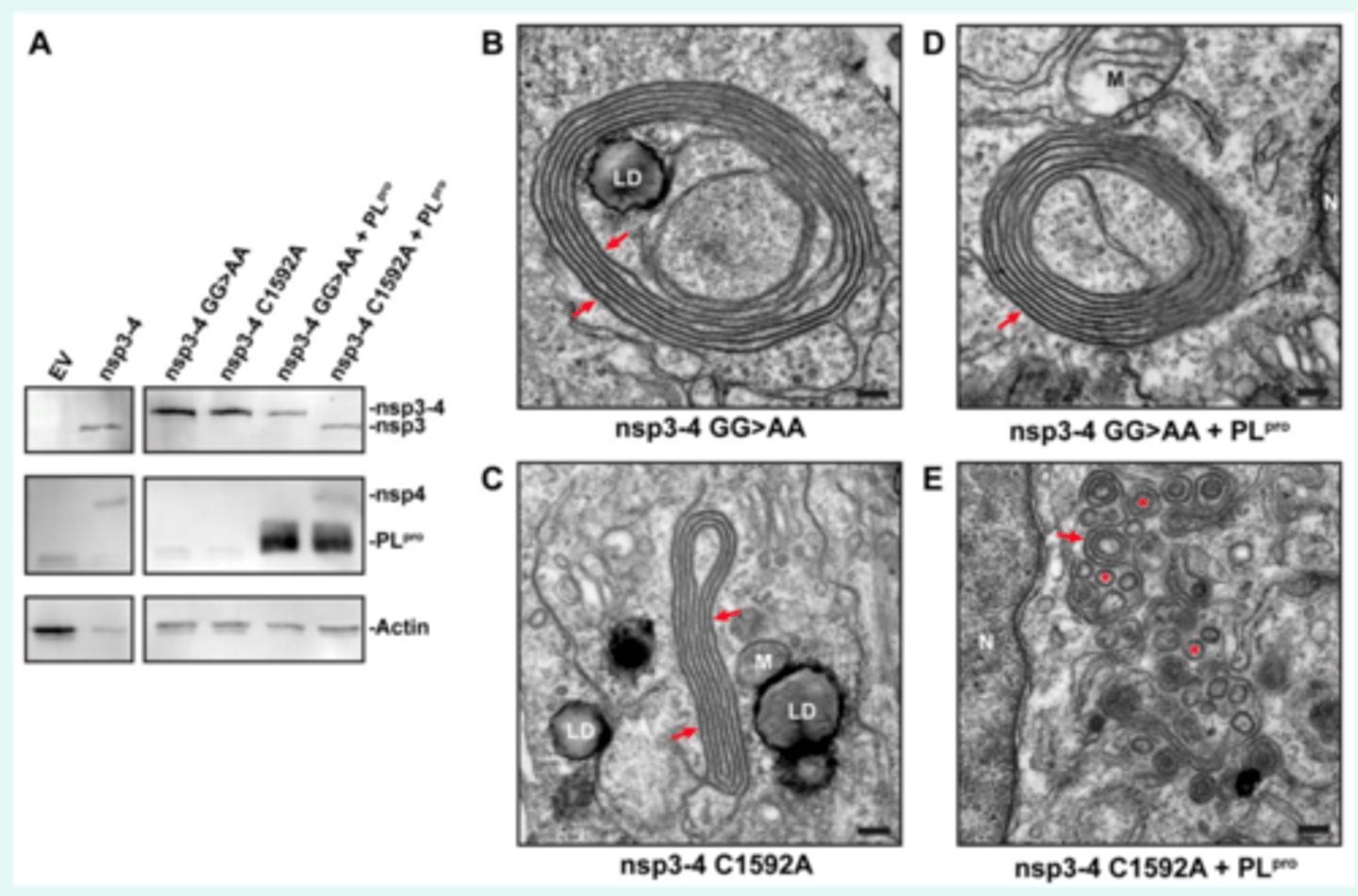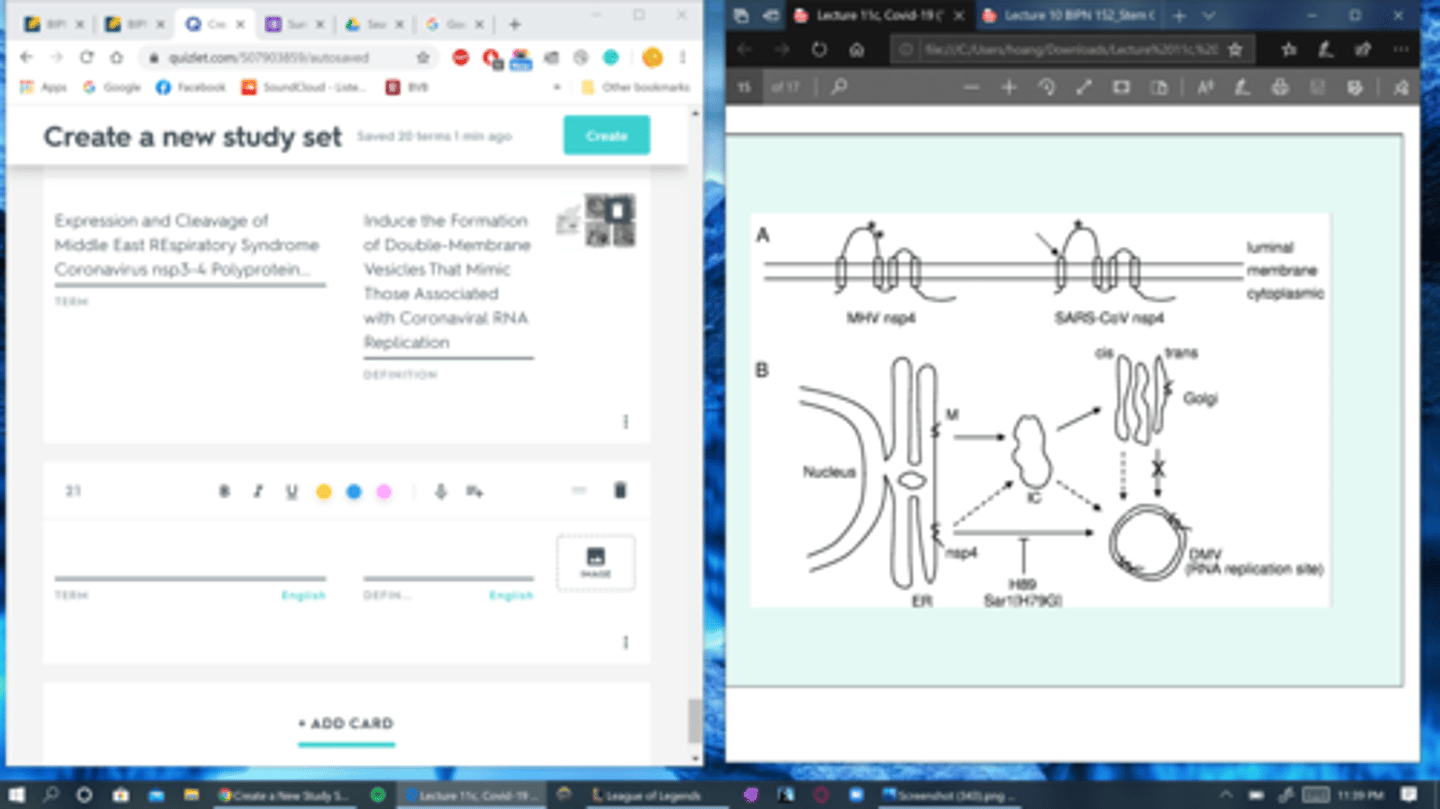COVID-19
1/20
There's no tags or description
Looks like no tags are added yet.
Name | Mastery | Learn | Test | Matching | Spaced |
|---|
No study sessions yet.
21 Terms
Sequencing and analyzing an RNA virus genome (continued)
Isolate fluid that contains virus (and other stuff) --> Extract RNA --> Deplete host ribosomal RNA --> Reverse transcribe (remaining RNA into cDNA) --> Illumina sequencing: 150bp reads --> 56,565,928 reads --> Assemble into contigs --> filter out human sequences --> 23,712,657 --> Compare to known sequences --> Longest contig had high abundance and best alignment with coronavirus genomes --> Further analysis and confirmation with PCR and sequencing
Types of Coronavirus
- SARS (CoV1), SARS-CoV2
- MERS (Middle East Respiratory Syndrome Coronavirus)
Viral Replication Strategies
- Plus Strand RNA Virus Families
- Cause many serious diseases of animals and man
- Foot and mouth virus first animal virus described (1898).
SARS-CoV2
- Causes COVID-19 disease
- First identified late Dec 2019 in Wuhan, China on patients with pneumonia
- First genome sequence made publicly available Jan 10, 2020
- Metagenomic RNA sequencing of a spale of Bronchoalveolar lavage fluid patient
Covid-19 is a....
Betacoronavirus
- Phylogenetic analysis of the complete viral genome (29,903 nucleotides) revealed that the virus was most closely related (89.1% nucleotide similarity) to a group of SARS-like coronaviruses Likely "zoonosis" from a bat
SARS CoV-1, MERS, and SARS CoV-2 likely all emerged from bats and were transferred to humans via..
- Intermediate host
- More than 500 CoVs have been identified in bats in China, with estimates of unknown CoV diversity reaching >5,000
SARS: 8,098 cases, 774 deaths (epidemic ended)
MERS: 2,521 cases, 866 total deaths (infections still occuring)
We were able to control CoV-1/SARS within one year but not CoV2/COVID19. Why?
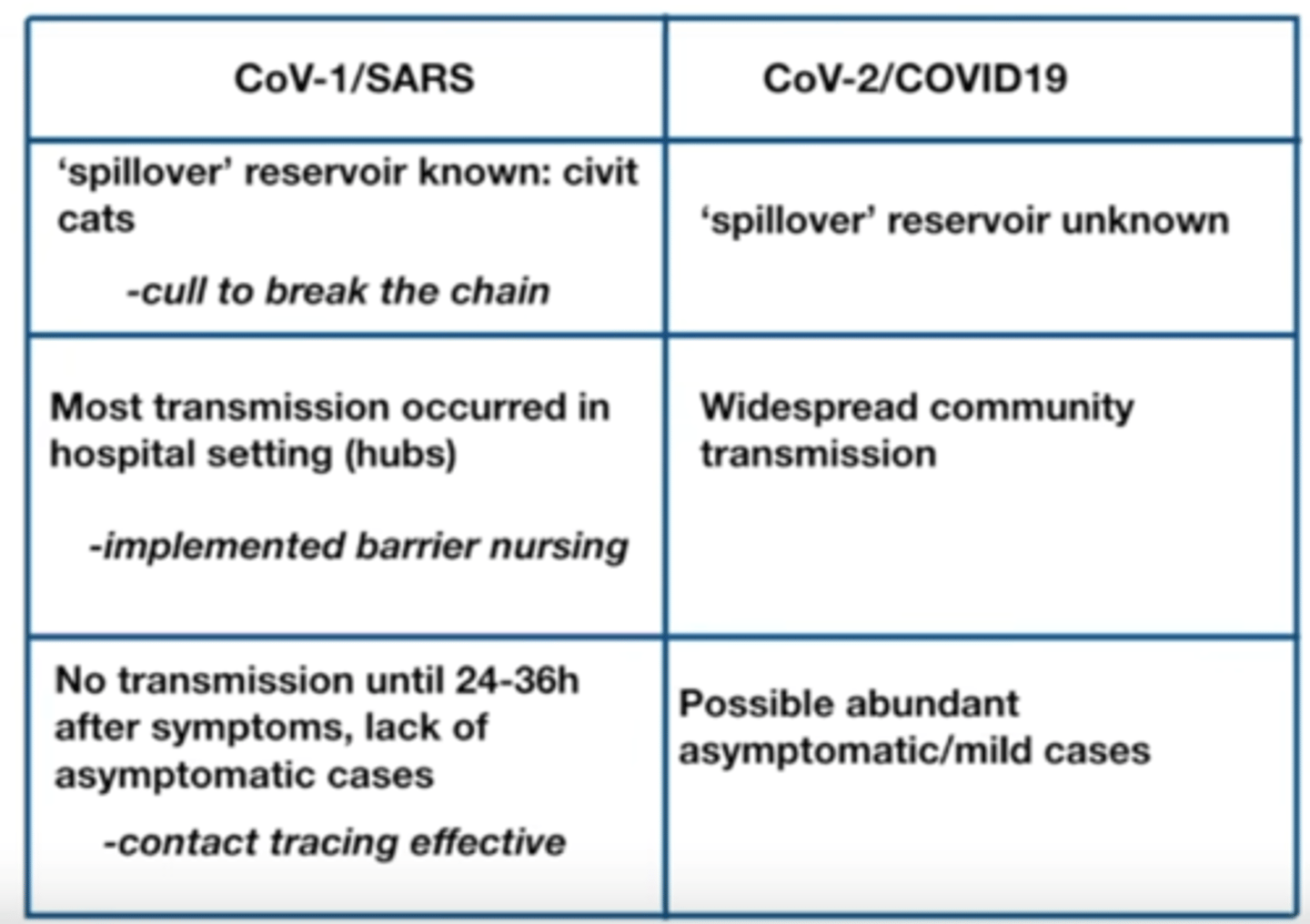
How does SARS-CoV2 enter host cells?
- Genome sequence indicated the receptor-binding domain (RBDD) of SARS-CoV2 spike protein should interact with same receptor (angiotensin converting enzyme receptor ACE2) as SARS-CoV
Overall Structure of SARS-CoV1
- CoV-2 entry is driven via binding between Spike protein and Angiotensin-converting enzyme 2 (ACE2)
- Then, protease (TMPRSS2) cleavage (multiple) allows entry
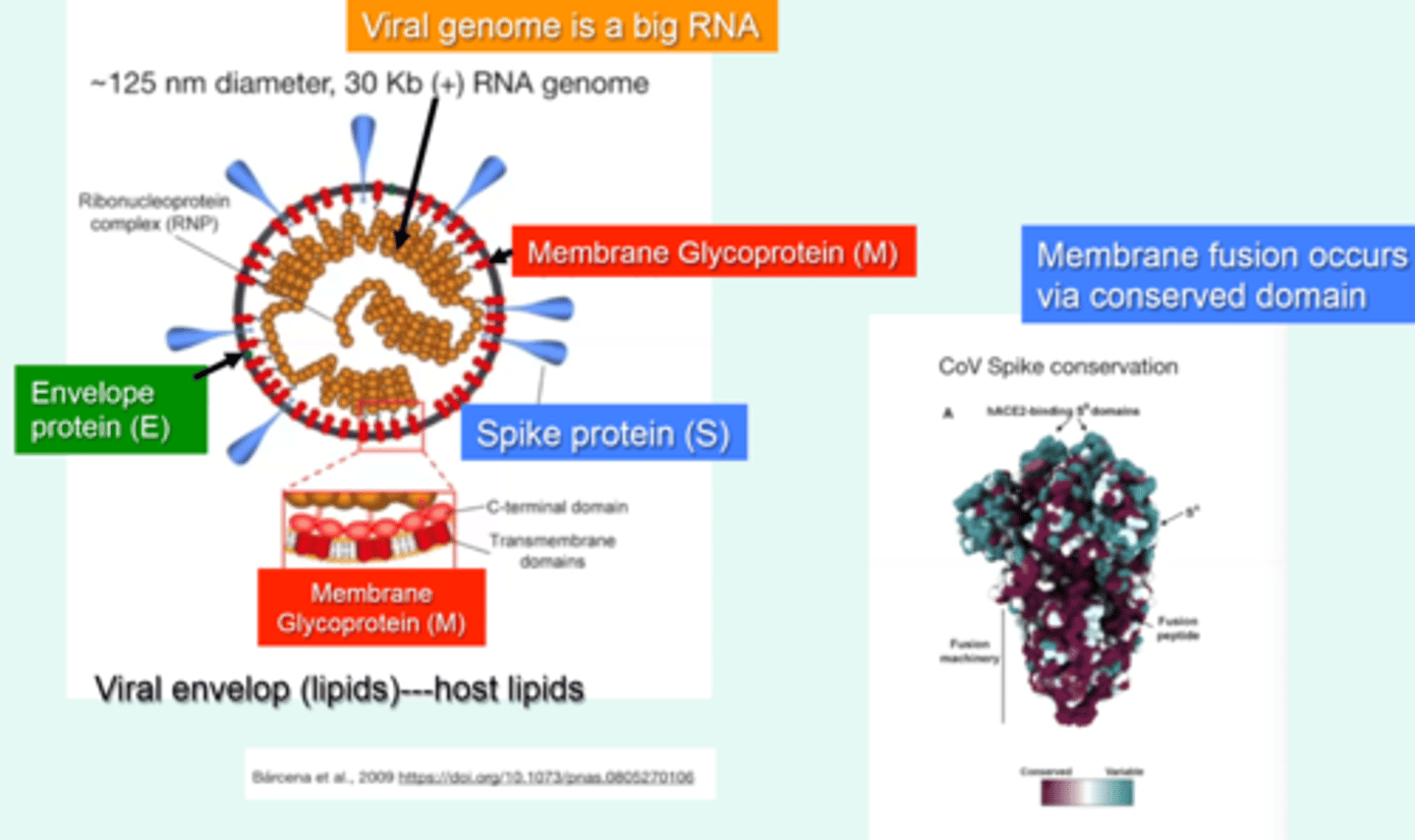
How does SARS-CoV2 enter host cells?
- Genome sequence indicated the receptor-binding domain (RBD) of SARS-CoV2 spike protein should interact with same receptor (angiotensin converting enzyme receptor ACE2) as SARS-CoV
- Experimental support of this model just published
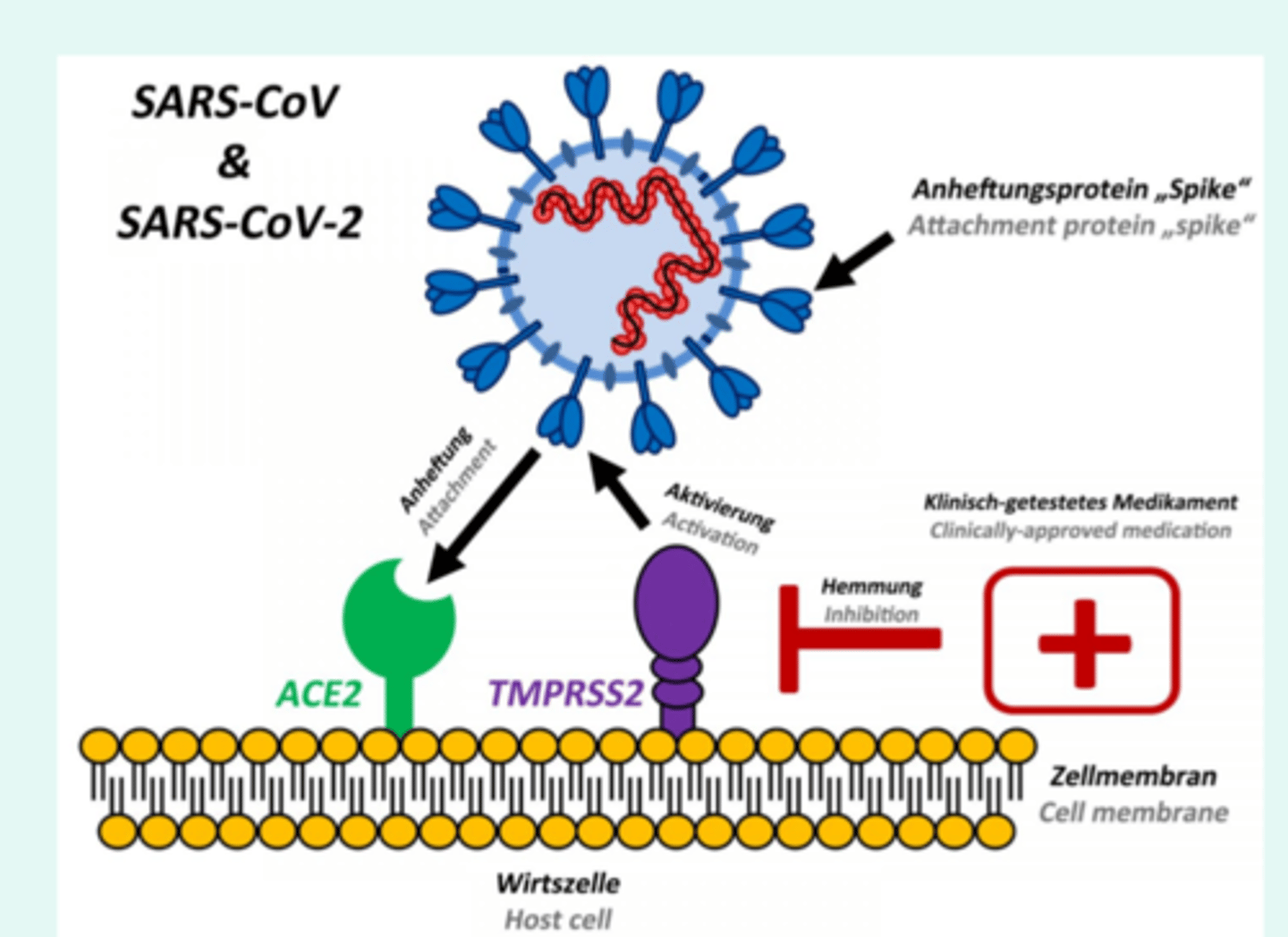
How do viruses enter host cells?
- Bind to cell surface receptors on host cells
- e.g. CCR5 gene and HIV/AIDS
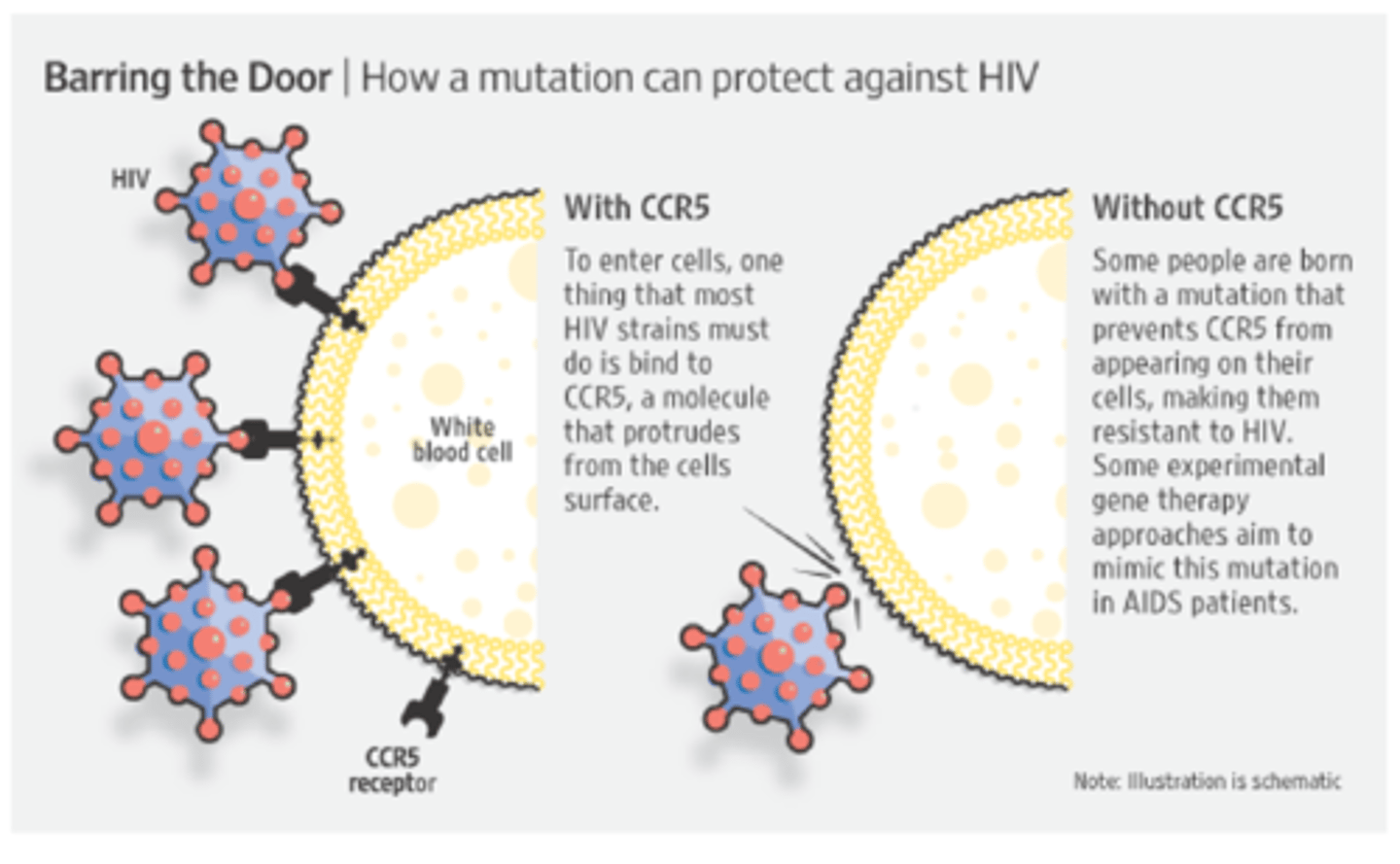
How might ACE2R mutations affect human susceptibility to SARS-CoV2?
- Loss of function mutations would cause resistance to infection
Viral Life Cycle
1. Enter
2. Replicate
3. Exit
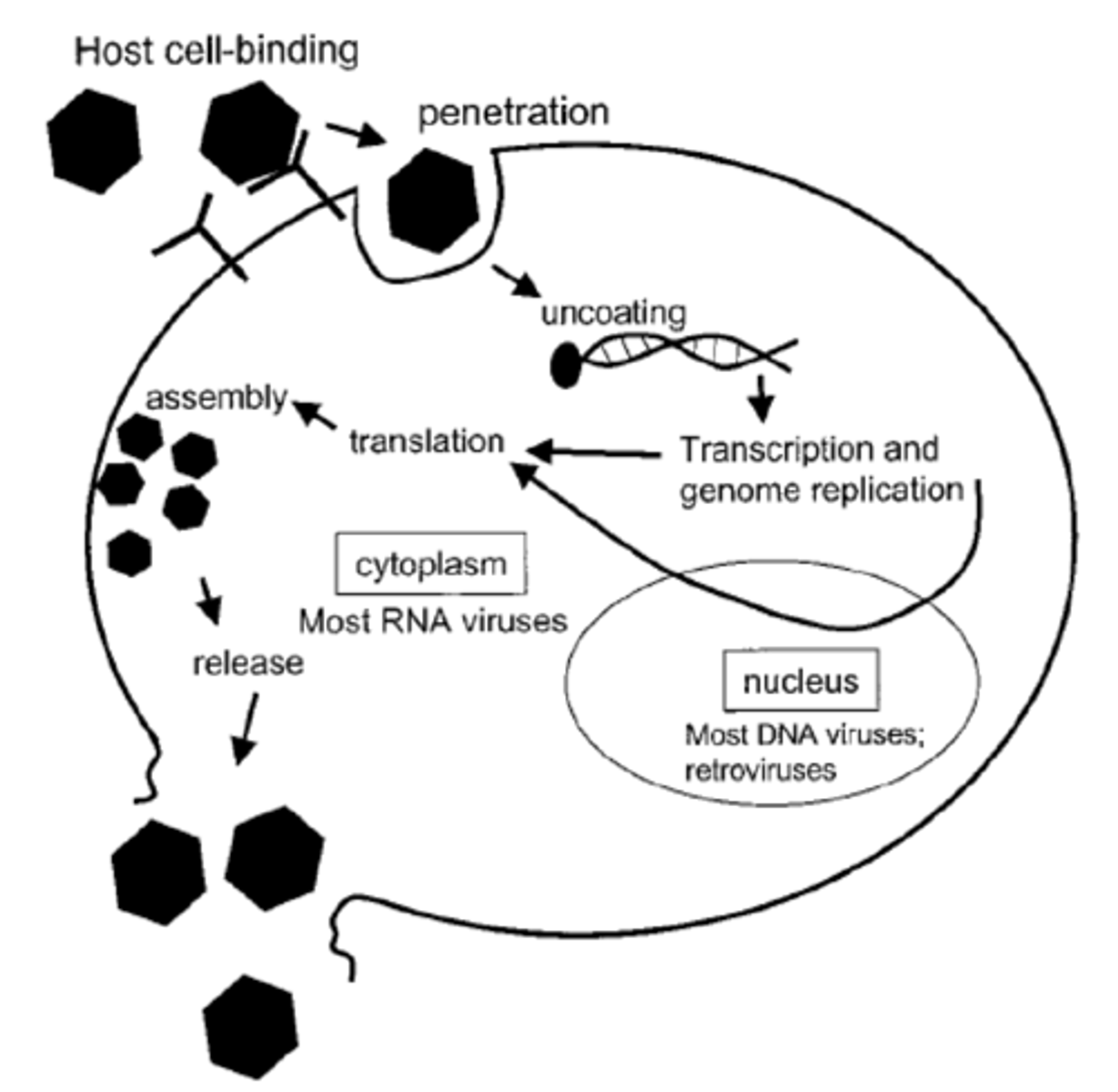
The 2019-nCoV genome was annotated to posses 14 ORFs enconding 27 proteins
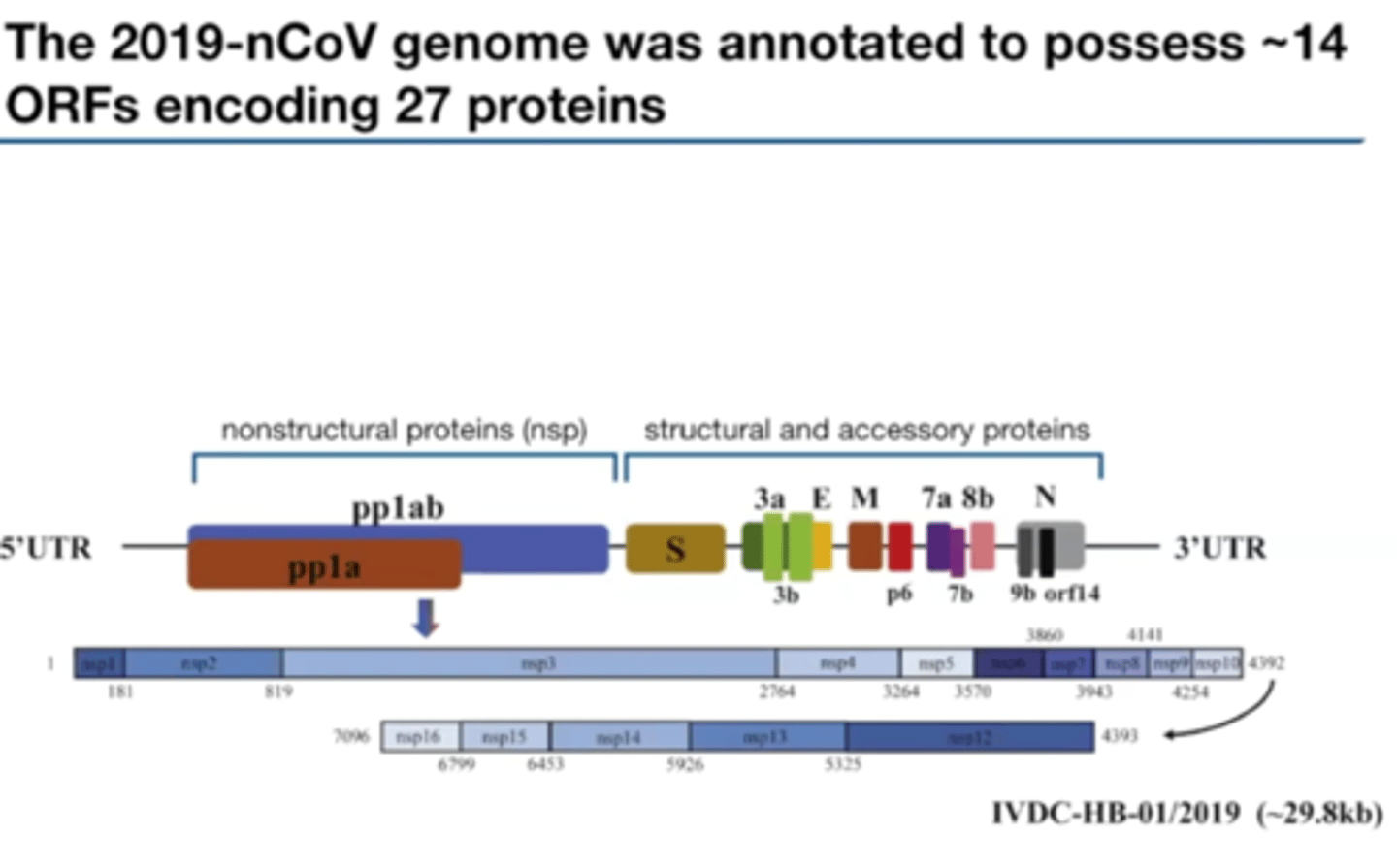
One large RNA to translate two polyproteins by RNA structure, called Pseudoknot
- Programed ribosomal frameshifting generates two polyproteins coding for genes involved in replication
- A stop codon at the end of ORF1a is no longer read as a stop codon because of the slippery heptanucleotide
RNA Polymerase Gymnastic Allows generation of the CoV-2 structural and accessory proteins
- long Range RNA-RNA interaction
- Once polymerase codes cCS-B via long range RNA-RNA interaction
- JUMP JUMP
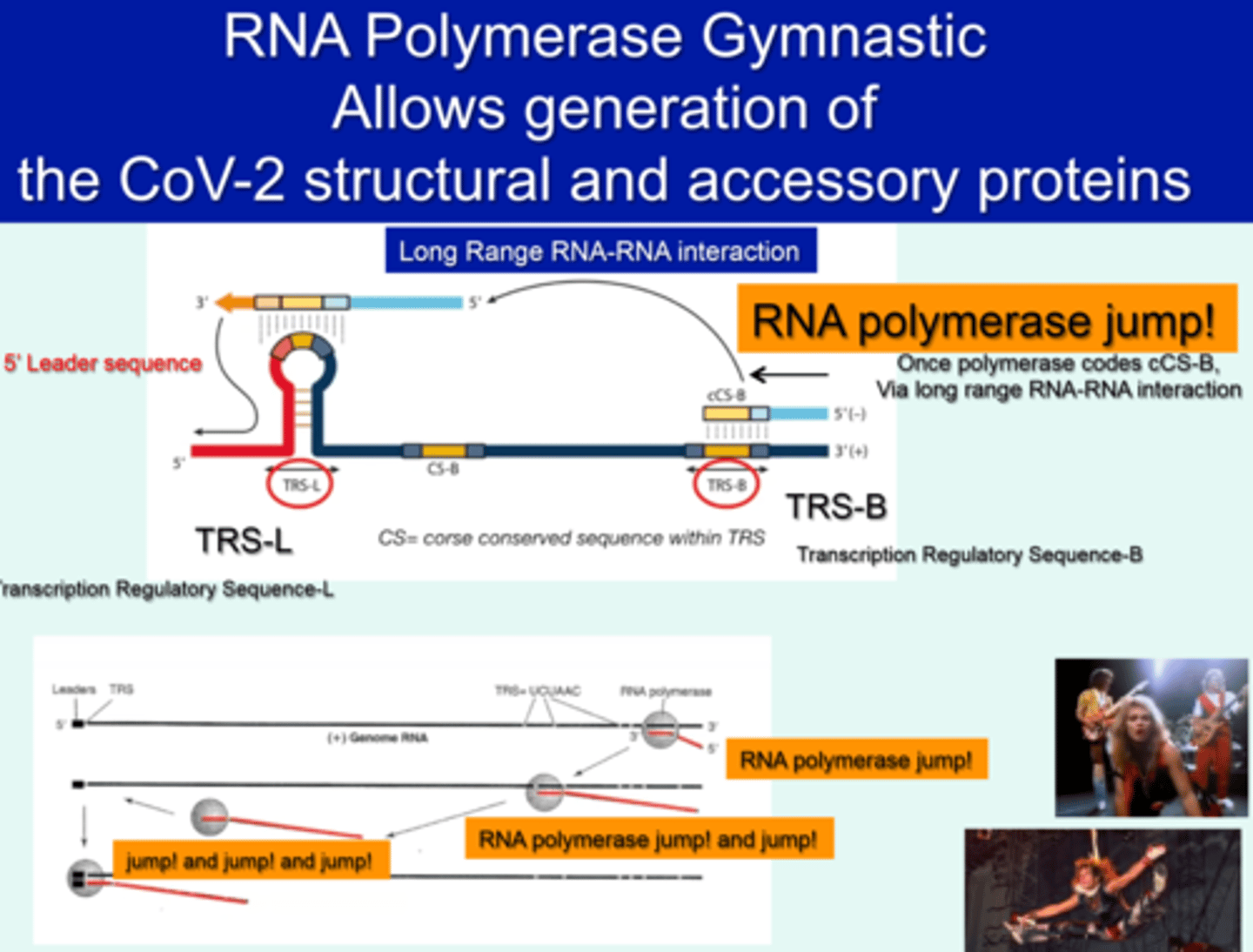
then..., (-) subgenomic mRNA templates have to become (+) sub genomic mRNA
- discontinuous transcription
- A very high recombination rates (up to 25%) due to RNA pol jumping
- Unique to SARS CoV-2 compare to other RNA viruses
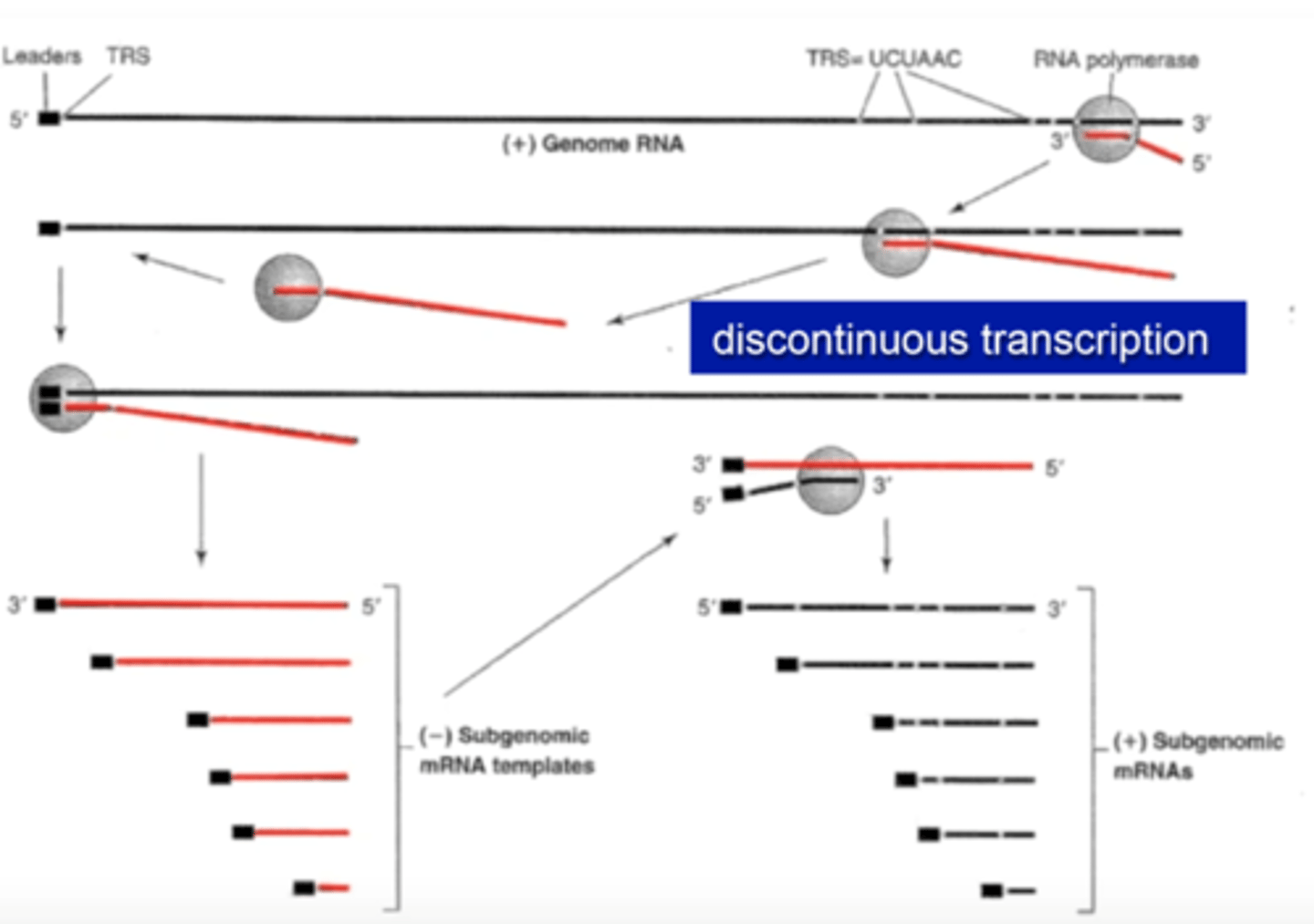
Flavivirus Envelope Protein Translation and Processing
- A transmembrane insertion occurs at the ER during viral protein translation
- The capsid protein has a hydrophobic signal sequence at its C-terminus that translocates the prM (membrane precursor protein) into the ER lumen
- The capsid protein associates with viral RNA and assembles at the ER surface as an immature virion
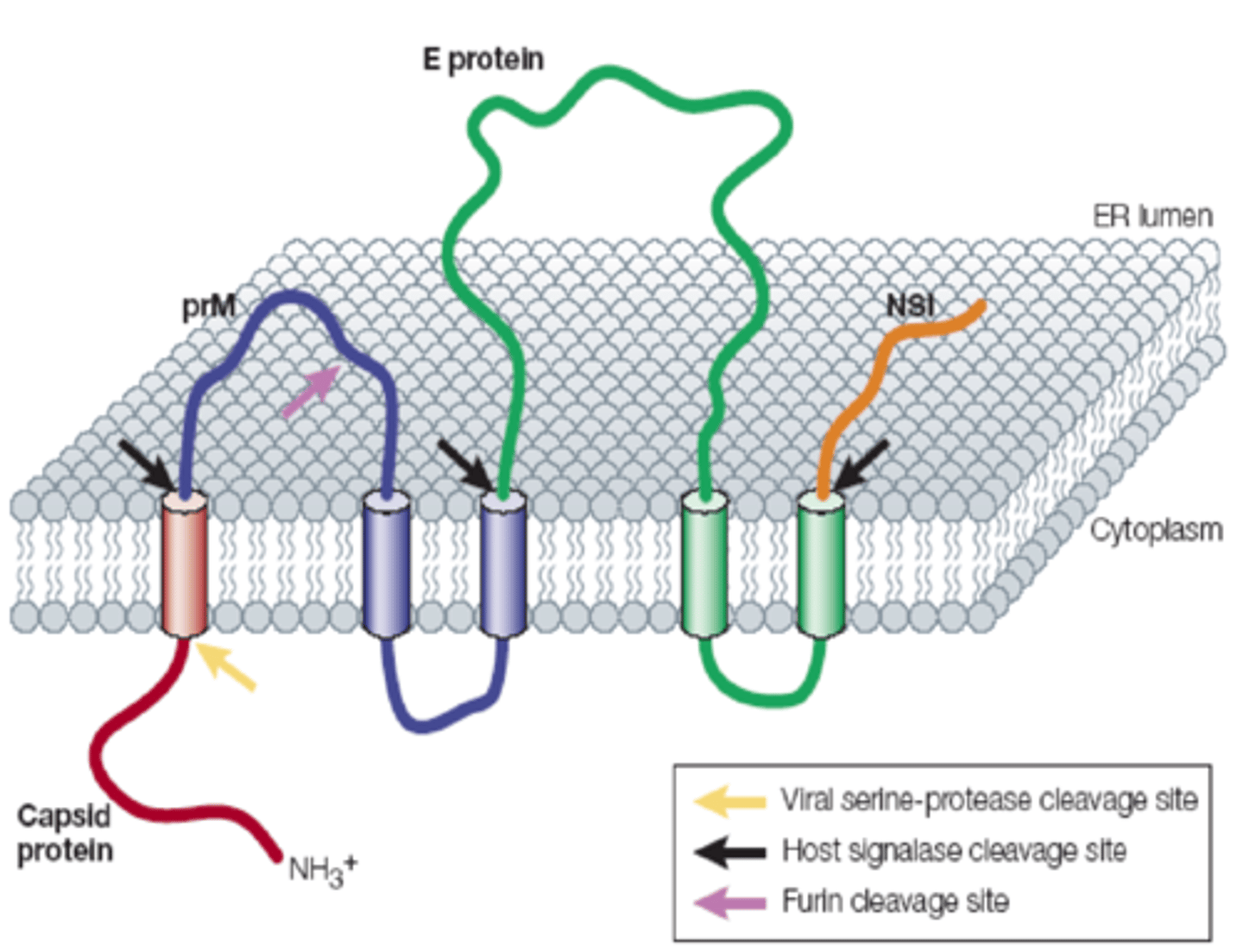
- Double membrane vesicle
- SARS replication-transcription complexes (RTC)
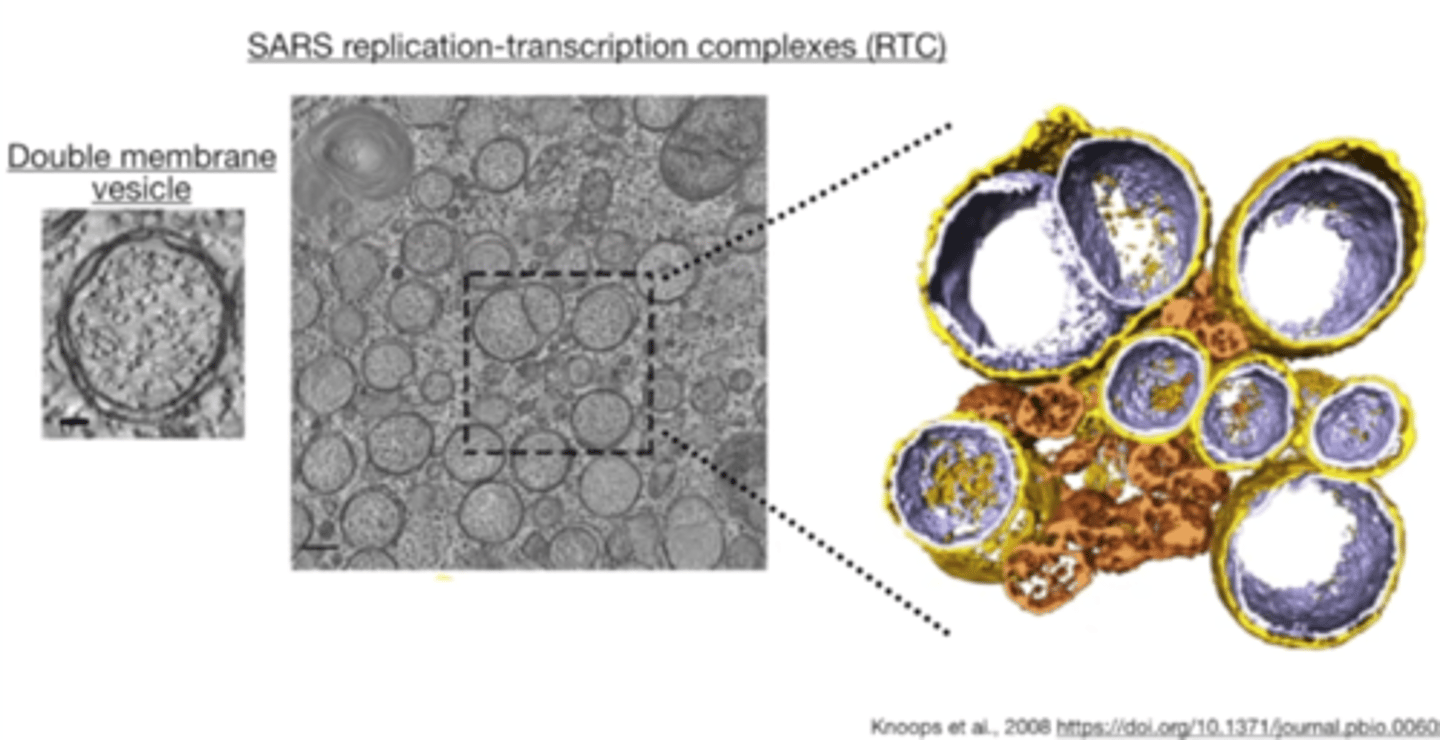
Expression and Cleavage of Middle East REspiratory Syndrome Coronavirus nsp3-4 Polyprotein...
Induce the Formation of Double-Membrane Vesicles That Mimic Those Associated with Coronaviral RNA Replication
